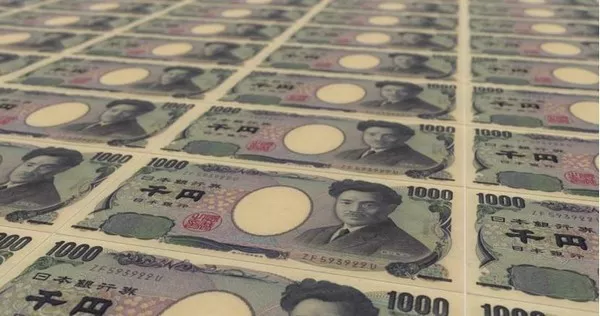In the world of finance and international trade, acronyms and abbreviations are commonplace. These shorthand notations help streamline communication and make complex concepts more accessible. One such acronym that often perplexes individuals who are not well-versed in the world of currencies is JPY. In this article, we will delve into the meaning and significance of JPY, exploring what it stands for and its role in the global economy.
Understanding Currency Codes
Before we dive into what JPY stands for, it’s crucial to understand the broader context of currency codes. Currencies are represented in international transactions using three-letter codes, which serve as a standardized shorthand for each nation’s currency. These codes are essential for accurate and efficient financial communication in a globalized world. For instance, USD represents the United States Dollar, EUR stands for the Euro, and GBP signifies the British Pound Sterling.
What Does JPY Stand For?
Now that we have established the importance of currency codes, let’s address the question at hand: What does JPY stand for? JPY is the currency code for the Japanese Yen. The Japanese Yen is the official currency of Japan and is one of the most widely used currencies in the world. JPY is derived from the word “Yen,” which is the Japanese term for currency or money. In the Japanese writing system, the symbol for the Yen is ¥, and it is often used interchangeably with JPY.
The History of the Japanese Yen
To fully appreciate the significance of JPY, it’s essential to delve into the history of the Japanese Yen. The Yen has a rich and storied past, dating back to the 19th century. In 1871, the Meiji government, in a sweeping modernization effort, introduced the Yen as Japan’s official currency. At that time, it was based on the Spanish dollar and was initially called the “New Currency.” The Yen was divided into 100 sen, a subunit that is no longer in use today.
Over the years, the Japanese government made several adjustments to the Yen’s value and pegged it to various international currencies, including the British Pound and the U.S. Dollar. These changes aimed to stabilize the Japanese economy and promote international trade.
The Role of JPY in Global Finance
Now that we have a better understanding of what JPY stands for and its historical roots let’s explore its significance in the global financial landscape. The Japanese Yen is one of the major currencies used in international trade and finance, alongside the U.S. Dollar (USD), Euro (EUR), and British Pound Sterling (GBP). It plays a critical role in the foreign exchange (Forex) market, where currencies are bought and sold on a daily basis.
Many factors contribute to the importance of JPY in global finance. Japan is one of the world’s largest economies, boasting a strong manufacturing sector, advanced technology, and a significant presence in the global automotive and electronics industries. As a result, Japanese companies engage in extensive international trade, and the Yen is frequently used for cross-border transactions.
Moreover, Japan is known for its stable and low inflation rate, which adds to the Yen’s appeal as a reserve currency. Central banks and financial institutions around the world often hold reserves of Japanese Yen as part of their foreign exchange reserves, further solidifying its role in global finance.
JPY Exchange Rates
The value of the Japanese Yen in the foreign exchange market fluctuates daily based on supply and demand dynamics and various economic factors. Exchange rates between JPY and other currencies, such as USD, EUR, and GBP, are closely monitored by traders, investors, and businesses engaged in international trade.
Changes in JPY exchange rates can have significant implications for global trade and investment. A stronger Yen can make Japanese exports more expensive, potentially impacting the competitiveness of Japanese products in international markets. Conversely, a weaker Yen can make Japanese exports more attractive and boost the country’s exports.
JPY and the Carry Trade
One unique aspect of JPY’s role in global finance is its association with the carry trade. The carry trade is a speculative strategy in which investors borrow funds in a currency with a low-interest rate, such as JPY, and invest them in a currency with a higher interest rate, aiming to profit from the interest rate differential.
The Japanese Yen has historically been a popular choice for the funding currency in carry trades due to its low-interest rates, often set by the Bank of Japan (BOJ) to stimulate the domestic economy. Investors who engage in carry trades with JPY often seek currencies with higher yields, such as the Australian Dollar (AUD) or the New Zealand Dollar (NZD).
However, it’s important to note that carry trades can be risky, as exchange rate fluctuations can erase any interest rate gains. As a result, the carry trade is a strategy that requires careful consideration and risk management.
Conclusion
In conclusion, JPY stands for the Japanese Yen, the official currency of Japan. This three-letter currency code plays a vital role in international trade and finance, given Japan’s status as one of the world’s largest economies. The Japanese Yen’s history, value, and role in global finance make it a key player in the dynamic and ever-evolving world of currencies. Understanding what JPY stands for is not just a matter of financial literacy; it is an essential aspect of participating in the global economy and international trade.
Related Topics:
Why Is the JPY So Weak: Exploring Factors Behind Japan’s Depreciating Currency
Comprehensive Overview about Japanese Yen (JPY) Currency
Why is GBP/JPY Falling? Exploring the Factors Behind the Exchange Rate Decline




























